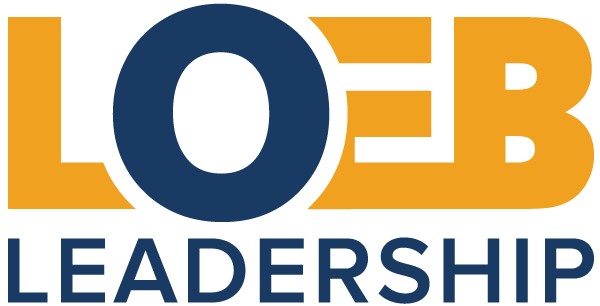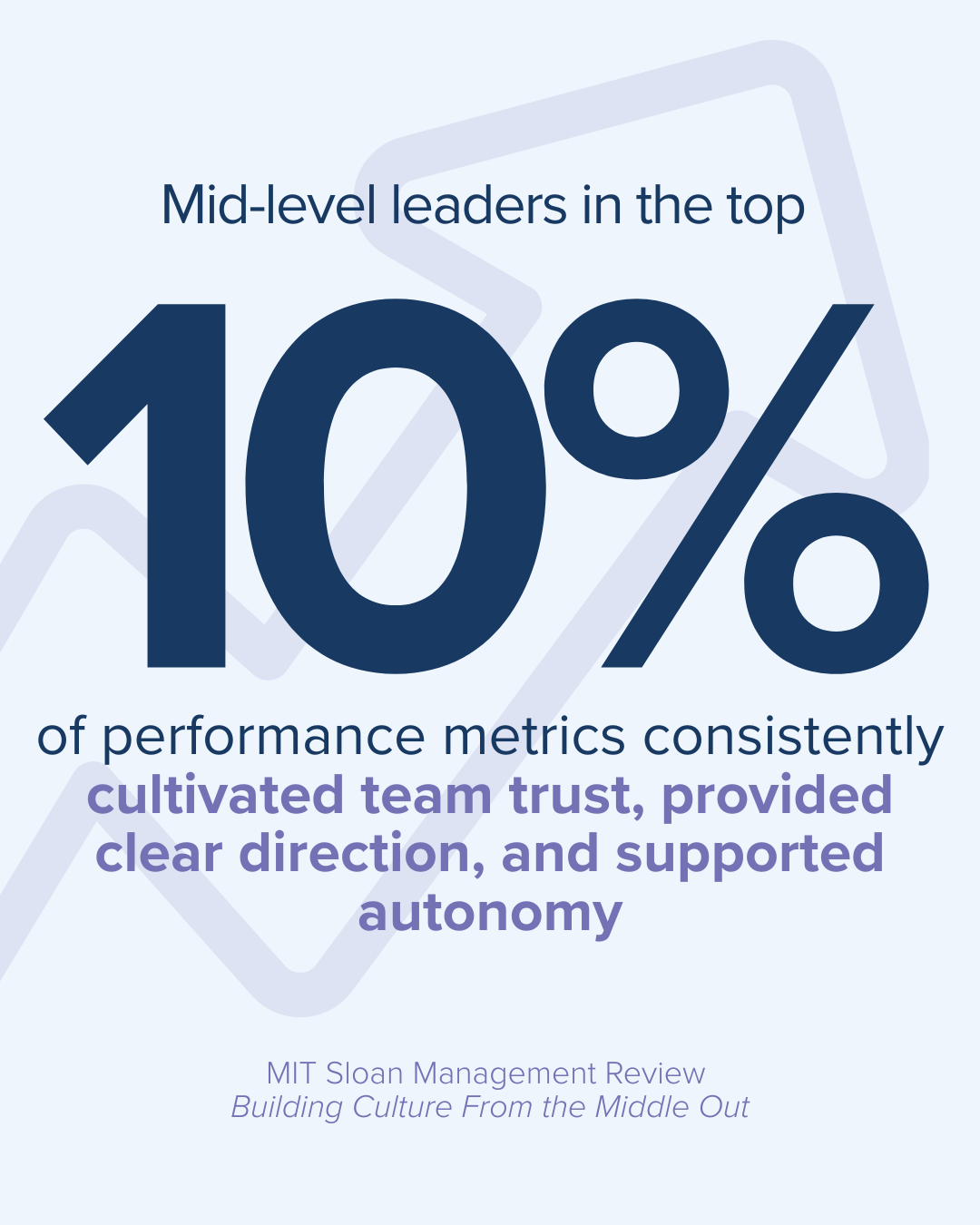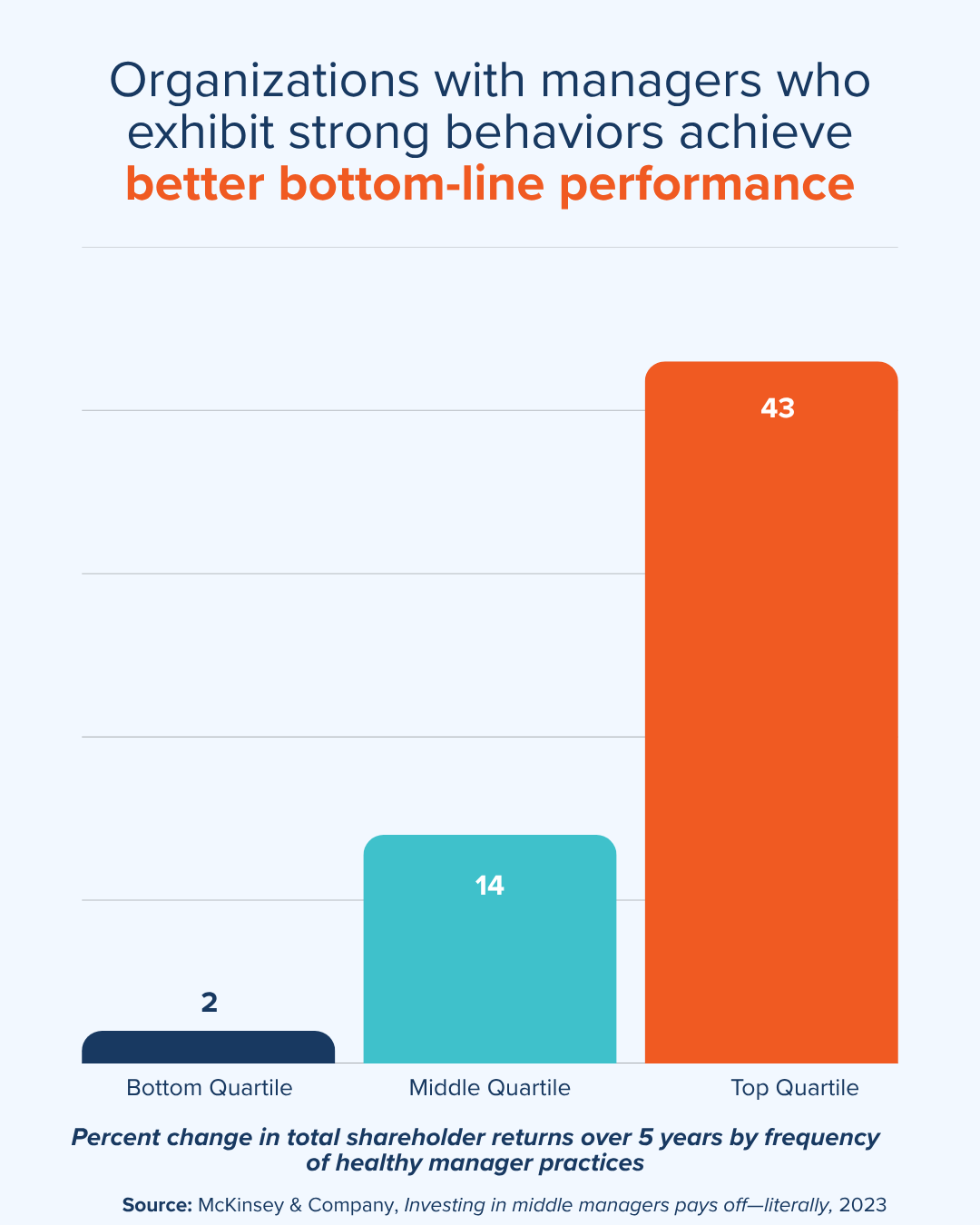The Role of Mid-Level Leaders in Culture and Organizational Performance
Why Mid-Level Leadership Matters More Than Ever
In today’s complex, hybrid, and high-change workplace, the spotlight is turning toward an often-overlooked group of leaders: mid-level managers. While senior leaders may set strategic direction and front-line employees carry out essential work, it’s mid-level leaders who translate big-picture vision into everyday reality.
These leaders serve as the connective tissue between strategy and execution, mission and morale. Their actions shape employee experience, influence performance, and determine how deeply workplace culture is lived on the ground. In short, mid-level leadership is a powerful lever for organizational performance.
Bridging Strategy and Day-to-Day Culture
Mid-level leaders operate at the heart of any organization. They manage people, communicate direction, oversee operations, and influence how decisions are implemented. And their reach is significant. According to research published in the SA Journal of Human Resource Management, mid-level leaders shape culture by modeling behaviors, encouraging development, and creating safe spaces for communication and collaboration.
While C-suite leaders may define organizational values, it’s mid-level leaders who reinforce them through everyday actions. If inclusion is a value, it’s up to these leaders to ensure that team meetings are equitable. If innovation is a priority, they must make space for experimentation and reward fresh thinking. The difference between espoused values and lived culture often lies in the habits of mid-level leaders.
Explore how Loeb Leadership supports organizational culture transformation.
Driving Performance Through Influence
Great mid-level leaders do more than manage workflows—they inspire results. A study published in MIT Sloan Management Review found that mid-level leaders in the top 10% of performance metrics consistently cultivated team trust, provided clear direction, and supported autonomy. These teams also reported higher retention and satisfaction rates.
Here’s how effective mid-level leadership impacts performance:
Clarity of Expectations: These leaders turn strategic goals into tactical actions. They help teams understand priorities and eliminate ambiguity.
Feedback and Development: They provide timely, relevant coaching to help employees grow and stay engaged.
Trust and Accountability: They create psychologically safe environments where people are encouraged to take ownership and be honest about challenges.
At Loeb Leadership, our Leadership Training programs are designed to equip mid-level managers with these exact capabilities, helping them lead with impact.
Challenges Facing Mid-Level Leaders
Despite their importance, mid-level leaders are often under-resourced and under-supported. They face pressure from both above and below, navigating the competing demands of strategy execution, employee care, and operational delivery. Burnout is a common risk.
Moreover, many organizations don’t invest in preparing leaders for this pivotal role. People are promoted based on technical ability, not leadership potential. Without structured development, they may lack the skills to coach, manage conflict, or influence across the organization.
Investing in executive coaching and peer learning for mid-level leaders helps fill this critical gap—building confidence, competence, and community.
Embedding Mid-Level Leaders in Culture Strategy
If culture is “how things are done around here,” then mid-level leaders are your frontline ambassadors. Embedding them in your culture strategy requires more than cascading communications—it demands partnership.
Clarify the “Why” Behind the Culture
For culture to stick, mid-level leaders need to understand more than just the “what” of organizational values, they must internalize the “why.” Leaders who grasp the business rationale behind cultural goals, such as retention, innovation, or psychological safety, are more likely to model the right behaviors and inspire their teams to do the same. This starts with candid conversations from senior leadership about how culture fuels performance, supports strategy, and differentiates the company from competitors. When mid-level managers understand how their teams directly contribute to the broader organization, they become more intentional about shaping it.
Co-Create Cultural Rituals
Culture isn’t built solely in the boardroom, it’s reinforced through daily team interactions. That’s why empowering mid-level leaders to co-create cultural rituals and norms is so powerful. These could include weekly team syncs, shout-outs during meetings, or structured onboarding moments that reinforce company values. When managers take ownership of these rituals, they become cultural stewards who adapt values to their team’s context without diluting meaning. Inviting managers to help define feedback loops, recognition practices, and team communication norms ensures that culture is not only consistent but also personalized and sustainable at the ground level.
Equip and Empower
Even the most well-intentioned leaders need support. Providing managers with the right tools—such as diagnostic assessments, coaching, and training—helps them assess team dynamics, recognize misalignment early, and adjust course with confidence. Whether it’s using a DiSC® profile to understand communication preferences or facilitating a 360-degree feedback process to identify blind spots, the goal is to equip leaders with self-awareness and emotional intelligence. Empowered leaders take a more active role in shaping how culture shows up in daily operations, from how feedback is delivered to how meetings are run.
Learn more about how our DiSC® and personality assessments can support leadership self-awareness and team cohesion.
Recognize and Reward Cultural Leadership
What gets rewarded gets repeated. When organizations celebrate managers who foster inclusion, psychological safety, and team alignment, they signal that culture is a leadership priority. This recognition doesn’t always need to be formal. Whether it’s a spotlight in an all-hands meeting or a personal note from a senior leader, visible reinforcement encourages others to emulate those behaviors. Over time, this creates a virtuous cycle where mid-level leaders become the accessible, trusted stewards of workplace culture—and where performance and values go hand in hand.
A Culture-Centric Case Study: Adobe
Adobe, widely recognized for its strong culture, empowers mid-level leaders through its “Check-In” system, a performance management approach built around frequent feedback instead of annual reviews. Managers are trained to lead ongoing conversations about growth, goals, and values alignment—positioning them as key culture carriers. This decentralized yet intentional system has helped Adobe maintain high engagement and innovation across global teams.
From Middle Out: The Next Phase of Leadership Strategy
Leadership is no longer top-down. In adaptive organizations, leadership and culture flow outward from the middle. Companies that recognize this and invest accordingly build stronger, more resilient teams.
McKinsey & Company underscores this in its 2024 article, Middle managers are the heart of your company, which highlights the vital role these leaders play in organizational health and performance. Despite being burdened with administrative complexity, mid-level leaders are the integrators of people and strategy. Without them, organizations risk dysfunction.
By positioning mid-level leaders as culture architects and performance multipliers, companies unlock untapped potential and build cultures that last.
How Loeb Leadership Supports Mid-Level Leaders
At Loeb Leadership, we understand that the middle of the organization is where culture takes root and performance takes flight. Our solutions are designed to help mid-level leaders:
Gain clarity on their leadership style
Improve communication and feedback
Build psychologically safe teams
Navigate change and drive results
Whether through one-on-one coaching, leadership training for mid-level managers, or full culture assessments, we partner with organizations to strengthen this vital leadership tier.
Ready to build a stronger bridge between strategy and culture? Let’s talk about how we can help your mid-level leaders lead with intention, impact, and authenticity.
Follow Natalie Loeb on LinkedIn for more insights on intentional leadership, corporate strategy, wellness and well-being in the workplace, and more.




